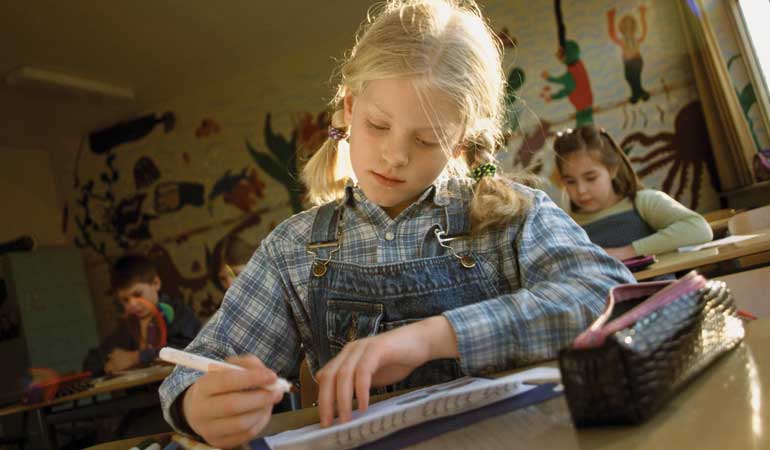Throughout the school year, your child will come home with a variety of assignments, some of which may be difficult to complete. How does your first-grader draw the branches of a family tree if he knows little of his birth family? How does your second- or third-grader tell the story of her birth or bring in infant pictures when none exist?
How does your child make a timeline of his life when parts of his past are so painful? Though each family navigates such sticky assignments in its own way (and based on its own story), it helps to be an advocate for your child and to begin a dialogue with her teacher early in the school year.
Becoming Inclusive
In those first discussions, you can share parts of your child’s story (while maintaining an appropriate level of privacy) and find out whether there will be an assignment that asks for birth facts, ancestry, or early history.
If so, tactfully suggest ways of expanding the project so that all kids will feel comfortable completing it. Though each class — and teacher — will have its own curriculum, there are a few common school assignments your child may encounter. Here are some ways to make them more inclusive.
Family trees. Teachers generally ask students to create a family tree to explore the concepts of the family unit and/or structures. As an alternative, the tree can be drawn to include people who live with and love a child (i.e., adoptive parents, siblings, grandparents, or pets). The “inclusive tree” can be a springboard to help young writers tell their family story and for the class to discuss how all families are unique.
Birth or early life information. Students are often asked to reveal specifics about their birth (What time were you born? How much did you weigh? What was the name of the hospital?) or for details about their early childhood (Whom did you look like? What was your favorite food? Did you have a special blanket?). Adopted children may not have this information and may feel unable to complete the assignment.
The project can easily be “de-personalized,” so that students can be allowed to gather data about all the places in their community where babies are born or to compare pictures of any newborn with those of a toddler. The assignment could also compare a child’s size or weight at some age in his life (say, when she first started school) with the present.
Family pictures. These popular assignments need not be a problem for students who live in nontraditional families. Ask your child’s teacher to provide models of diverse family constellations in class and to allow the children to use their imagination when creating their family portraits (birth relatives, a phantom dad, or a few fantasy siblings could be included in stories or drawings).
Student of the Week or “I Am Special” days or weeks. These events are designed to build a child’s self-esteem. But when students are asked to share baby pictures or family cultural traditions as a way of showing how special they are, adopted children can feel at a loss. Instead, students can be encouraged to focus on any aspect of their lives that makes them feel special: a sport they love, a family pet, a relationship with their birth mother, and so on.
Timelines. Many young children love timelines and gain an appreciation of history by making them. As an alternative to the traditional assignment, which starts at a child’s birth and follows his life to the present, a teacher might say, “We’re going to create a giant timeline of all the years you’ve been alive. Each of you will find out something important that happened during those years — in your family or in the world — and we’ll add it to our timeline.” Students can consult books or interview grownups for information.
The family story. Some adopted children have no problem writing or telling their personal stories. But others find the task harder. They feel they must either tell the truth (and reveal information that’s inappropriate for a classroom setting or potentially painful for the child), or bend the truth and spare themselves the pain.
Fortunately, teachers can provide other options: Students can be asked to write a biography of a historical figure and tell it in the first person, or create a story about one particular event in their life or a favorite experience at school.
As parents, we can’t assume that every teacher our child encounters will be sensitive to adoption, and we can’t rewrite our child’s life story to delete the painful parts. But we can be proactive at school, intervene when appropriate, band with other adoptive parents, and be a comforting presence.
A parent’s fears are easily read by young children, but so is our optimism. We can help make school a fun, invigorating, respectful place to learn and to spend the day.


